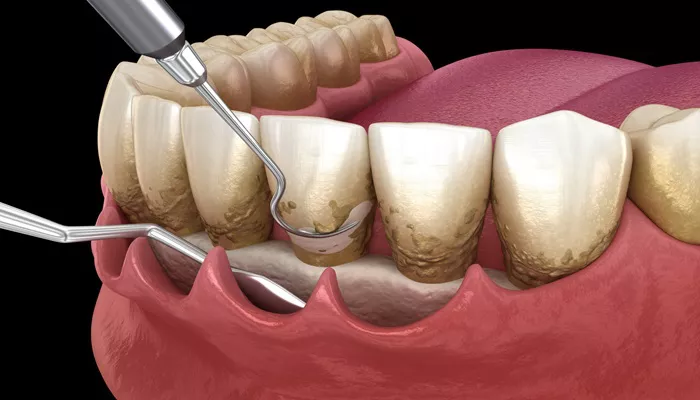Periodontal disease, a serious gum infection that damages the soft tissue and, without treatment, can destroy the bone that supports your teeth, is often treated with antibiotics. These medications can help control bacterial infections and reduce inflammation, making them an essential part of periodontal therapy. This article discusses the eight best antibiotics commonly used for treating periodontal disease, their mechanisms of action, and their effectiveness.
1. Amoxicillin
Overview: Amoxicillin is a broad-spectrum penicillin antibiotic effective against various bacteria associated with periodontal disease. It is often used as a first-line treatment due to its safety profile and efficacy.
Mechanism of Action: Amoxicillin works by inhibiting bacterial cell wall synthesis, leading to cell lysis and death. It is particularly effective against aerobic bacteria commonly found in periodontal infections.
Dosage: The typical dosage for treating periodontal disease is 500 mg taken three times daily for 7-10 days.
Effectiveness: Studies indicate that amoxicillin can significantly reduce pocket depths and improve clinical attachment levels when used in conjunction with scaling and root planing (SRP).
2. Metronidazole
Overview: Metronidazole is an antibiotic effective against anaerobic bacteria, which are prevalent in periodontal infections.
It is often used in combination with other antibiotics to enhance treatment outcomes.
Mechanism of Action: This medication disrupts DNA synthesis in bacteria, leading to cell death. It is particularly effective against Porphyromonas gingivalis and Prevotella intermedia, two key pathogens in periodontal disease.
Dosage: The recommended dosage is typically 500 mg taken twice daily for 7-10 days.
Effectiveness: Metronidazole has been shown to reduce inflammation and bacterial load effectively when combined with amoxicillin or tetracycline.
3. Doxycycline
Overview: Doxycycline is a tetracycline antibiotic that not only targets bacterial infections but also has anti-inflammatory properties beneficial in periodontal therapy.
Mechanism of Action: Doxycycline inhibits protein synthesis in bacteria and has a unique ability to inhibit collagenase, an enzyme that breaks down collagen in gum tissue.
Dosage: The initial dose is usually 100 mg on the first day, followed by 100 mg once daily for 21 days.
Effectiveness: Research suggests that doxycycline can improve clinical outcomes in patients with chronic periodontitis by reducing probing depths and enhancing attachment levels.
4. Clindamycin
Overview: Clindamycin is an antibiotic often reserved for patients allergic to penicillin or those with severe infections resistant to other treatments.
Mechanism of Action: Clindamycin works by inhibiting bacterial protein synthesis, effectively stopping the growth of susceptible bacteria.
Dosage: The usual dosage is 150-300 mg taken three times daily for 7-10 days.
Effectiveness: Clindamycin has been shown to be effective against a wide range of anaerobic bacteria associated with periodontal disease, making it a valuable option for specific patient populations.
5. Tetracycline
Overview: Tetracycline has been widely used for treating various forms of periodontal disease due to its ability to concentrate in periodontal tissues.
Mechanism of Action: Similar to doxycycline, tetracycline inhibits protein synthesis in bacteria and has anti-collagenase properties that help preserve connective tissue.
Dosage: The typical dosage is 250 mg taken four times daily for up to 14 days.
Effectiveness: Tetracycline has demonstrated efficacy in managing localized aggressive periodontitis, particularly against Aggregatibacter actinomycetemcomitans.
6. Amoxicillin-Clavulanate Potassium (Augmentin)
Overview: This combination antibiotic includes amoxicillin and clavulanate potassium, which helps overcome bacterial resistance mechanisms.
Mechanism of Action: While amoxicillin inhibits cell wall synthesis, clavulanate potassium protects it from degradation by beta-lactamase enzymes produced by resistant bacteria.
Dosage: The recommended dosage is typically 500 mg/125 mg taken three times daily for 7-10 days.
Effectiveness: Augmentin has been found effective in treating localized aggressive periodontitis and preventing alveolar bone loss.
7. Azithromycin
Overview: Azithromycin is a macrolide antibiotic known for its anti-inflammatory properties alongside its antibacterial effects.
Mechanism of Action: It inhibits bacterial protein synthesis by binding to the ribosomal subunit, effectively stopping bacterial growth.
Dosage: A common regimen includes a loading dose of 500 mg on the first day followed by 250 mg once daily for four additional days.
Effectiveness: Azithromycin has been shown to reduce clinical signs of inflammation and improve attachment levels in patients with chronic periodontitis.
8. Ciprofloxacin
Overview: Ciprofloxacin is a fluoroquinolone antibiotic effective against gram-negative bacteria frequently involved in periodontal infections.
Mechanism of Action: It inhibits bacterial DNA gyrase, an enzyme crucial for DNA replication and transcription in prokaryotic cells.
Dosage: The usual dosage ranges from 500 mg to 750 mg taken twice daily for up to 14 days.
Effectiveness: Ciprofloxacin has been shown to be effective when used in combination with metronidazole or other antibiotics to enhance overall treatment efficacy.
Conclusion
The management of periodontal disease often requires a multifaceted approach that includes both mechanical cleaning and pharmacological intervention. Antibiotics play a critical role in controlling infection and promoting healing. Each antibiotic discussed above has unique properties that make it suitable for different types of periodontal infections.
Dentists must evaluate each patient’s specific condition and history before prescribing antibiotics to ensure optimal treatment outcomes while minimizing the risk of antibiotic resistance.

